HYDROBORATION OXIDATION
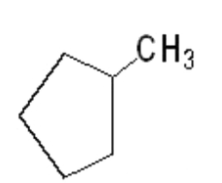
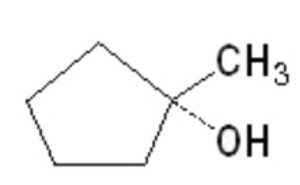

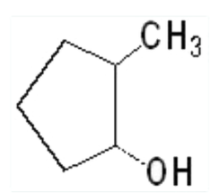
The correct Answer is:D
Step by step video, text & image solution for HYDROBORATION OXIDATION by Chemistry experts to help you in doubts & scoring excellent marks in Class 12 exams.
Updated on:21/07/2023Topper's Solved these Questions
Similar Questions
Addition of water molecule across double bond to yield Antimarkownikov's product. Can be accomplished by Hydroboration followed by oxidation. Reaction follows as:
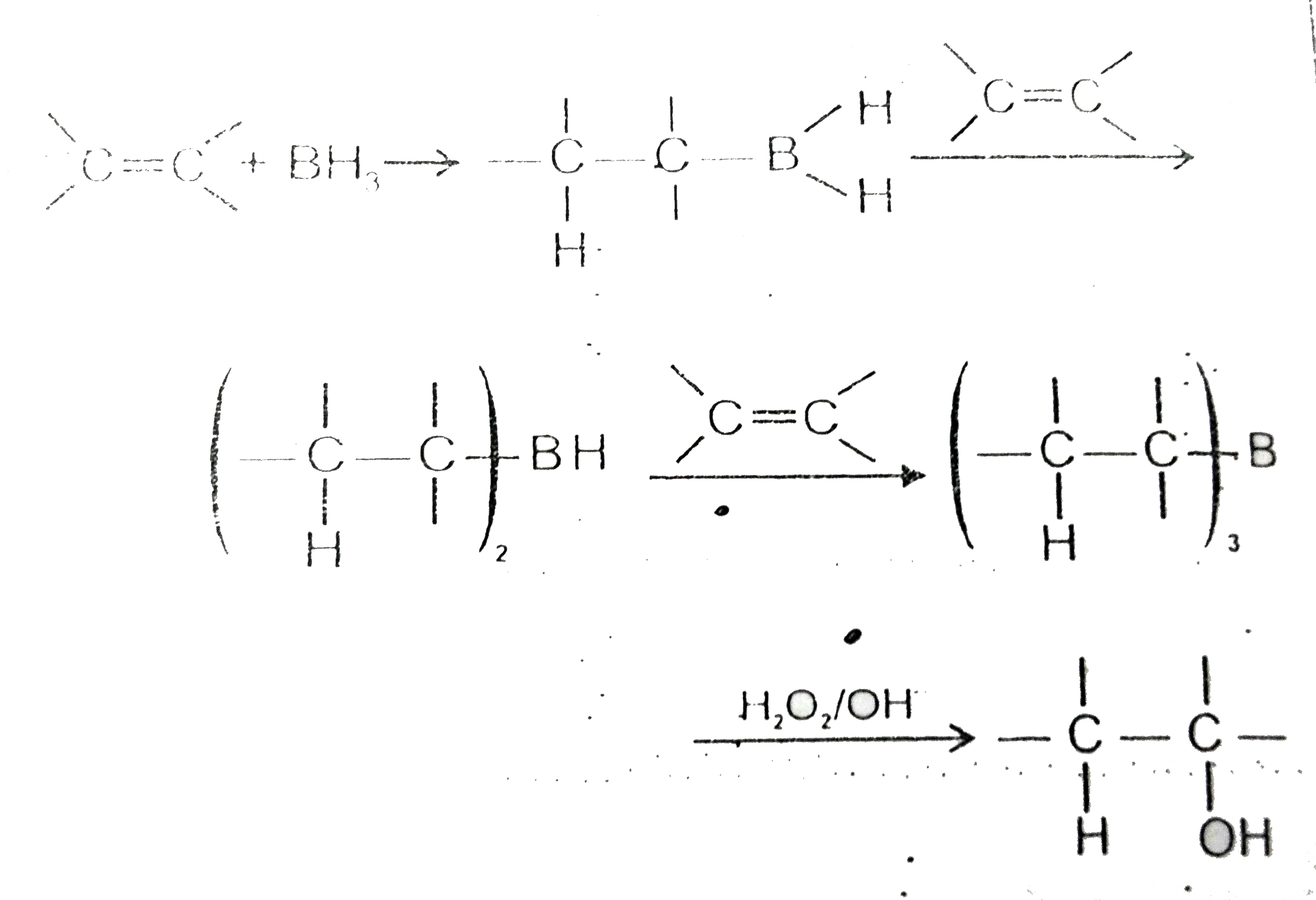
Product of hydroboration oxidation of 1-methyl cyclopentene is
View SolutionStatement-1: Hydroboration by oxidation of propene gives anti-Markovnikoff's alcohol.
and
Statement-2: Hydroboration reaction proceeds through Markovnikoff's addition
View Solution
Knowledge Check
Acid catalysed hydration of alkene give alcohol. In thic reaction addition of water takes place according to Markownikov's rule. Since intermediate carbocation is formed in this reaction, rearrangment of carbocation takes place. In oxymercuration-demercuration reaction hydration of alkene takes place according to markownikov's rule. Oxymercuratio-demercuration-dermercuration no rearrangement is possible. in hydroboration-oxidation hydration of alkene takes place according to anti marjownikow's addition. in HBO reaction rearrangement is not possible. both in oxymercuration-demercuation and hydroboration-oxidation, intermediate carbocation are not formed.
Q. CH3−C≡C−H(Sia)2HB−−−−−−−→H2O2/OH−A, A isACH3−CH2−CHOB CCH3−CHODCH3−CH2−CH2−OH
CCH3−CHODCH3−CH2−CH2−OHCompound A and C in the following reaction are …………………………. CH3CHO(i)CH3MgBr−−−−−−−−→(ii)H2OAH2SO4−−−→ΔBHydroboration−−−−−−−−→OxidationC
AidenticalBposition isomerCfunctional isomerDoptical isomerAcid catalysed hydration of alkene give alcohol. In thic reaction addition of water takes place according to Markownikov's rule. Since intermediate carbocation is formed in this reaction, rearrangment of carbocation takes place. In oxymercuration-demercuration reaction hydration of alkene takes place according to markownikov's rule. Oxymercuratio-demercuration-dermercuration no rearrangement is possible. in hydroboration-oxidation hydration of alkene takes place according to anti marjownikow's addition. in HBO reaction rearrangement is not possible. both in oxymercuration-demercuation and hydroboration-oxidation, intermediate carbocation are not formed.
Q. The product formed in the following reaction is:
 PruductA2-phenyl-2-propanolB2-phenyl-1-propanolC3-phenyl-1-propanolD1-phrnyl-2-propanol
PruductA2-phenyl-2-propanolB2-phenyl-1-propanolC3-phenyl-1-propanolD1-phrnyl-2-propanol
Addition of water molecule across double bond to yield Antimarkownikov's product. Can be accomplished by Hydroboration followed by oxidation. Reaction follows as:
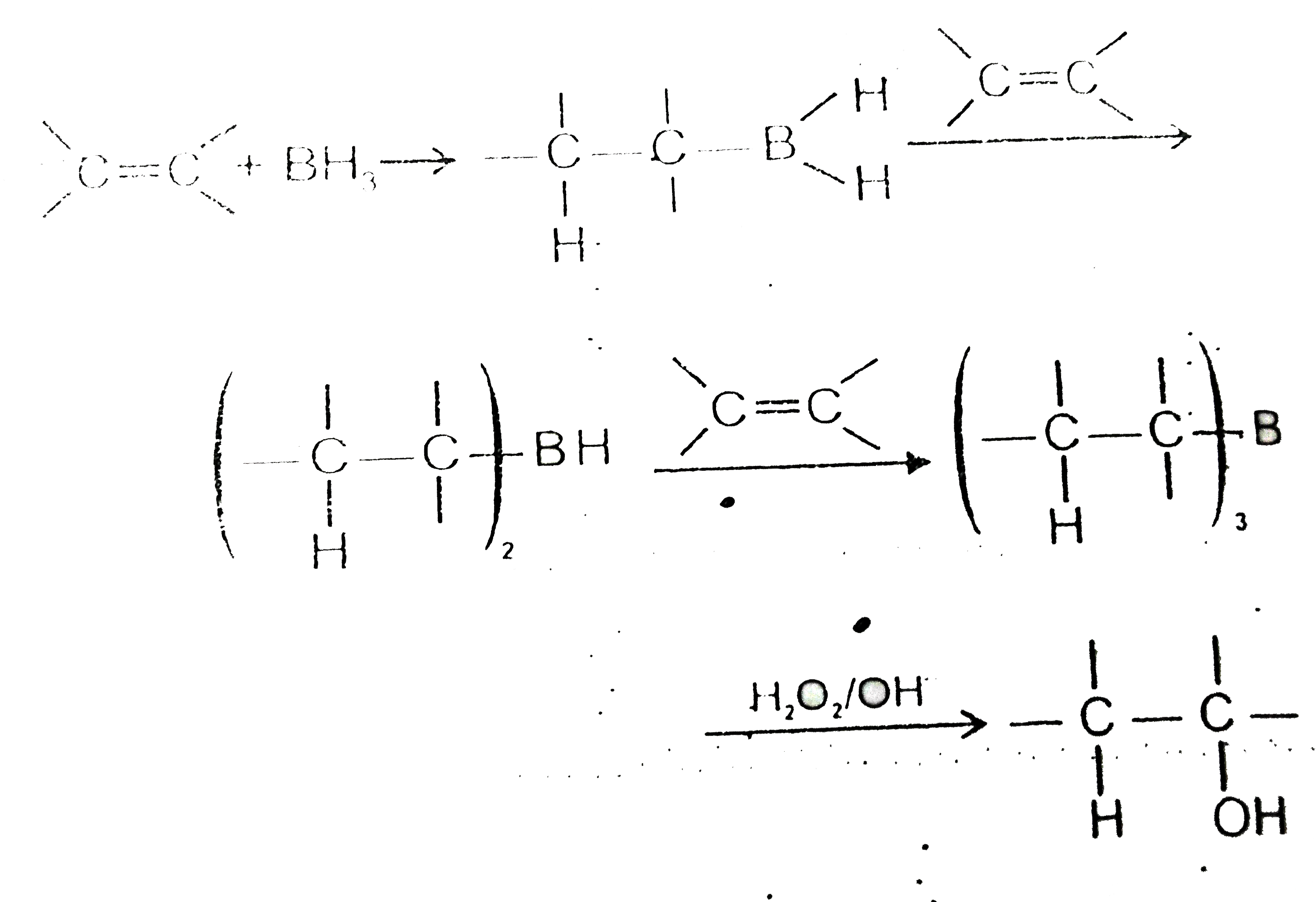
BH3 is behaving as
View SolutionAcid catalysed hydration of alkene give alcohol. In thic reaction addition of water takes place according to Markownikov's rule. Since intermediate carbocation is formed in this reaction, rearrangment of carbocation takes place. In oxymercuration-demercuration reaction hydration of alkene takes place according to markownikov's rule. Oxymercuratio-demercuration-dermercuration no rearrangement is possible. in hydroboration-oxidation hydration of alkene takes place according to anti marjownikow's addition. in HBO reaction rearrangement is not possible. both in oxymercuration-demercuation and hydroboration-oxidation, intermediate carbocation are not formed.
Q. The product formed in the following reaction is:
 Pruduct
Pruduct
View SolutionWhich of the following path ways produces 2-hexanone
(i) 1-hexyne is treated with H2SO4,HgSO4 and water
(ii) 3-methyl-2-heptene is treated with O3 followed by hydrolysis
(iii) n-butyl magnesium bromide reacts with acetaldehyde followed by hydrolysis and then chromic acid oxidation
(iv) hydroboration-oxidation of 1-hexyne.
View SolutionWhich of the following pathways produces 2-hexanone?
(i)1-Hexyne is treated with H2SO4,HgSO4 and water
(ii) 3-Methyl-2-heptene is treated with O3 followed by hydrolysis
n-Butyl magnesium bromide reacts with aetaldehyde followed by hydrolysis and then chromic acid oxidation
(iv) Hydroboration oxidation of 1-hexyne
View SolutionCompounds (A) and (C ) in the following reactions are
CH3CHO(i)CH3MgBr−−−−−−−−→(ii)H2O(A)H2SO4,Δ−−−−−−→(B)Hydroboration oxidation−−−−−−−−−−−−−−→(C)
View Solution
